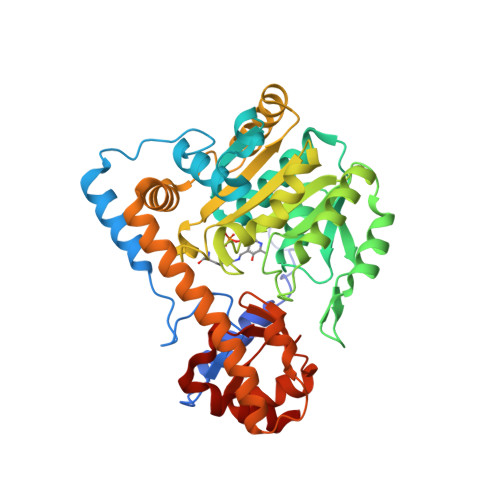Janus: prediction and ranking of mutations required for functional interconversion of enzymes.
Addington, T.A., Mertz, R.W., Siegel, J.B., Thompson, J.M., Fisher, A.J., Filkov, V., Fleischman, N.M., Suen, A.A., Zhang, C., Toney, M.D.(2013) J Mol Biol 425: 1378-1389
- PubMed: 23396064
- DOI: https://doi.org/10.1016/j.jmb.2013.01.034
- Primary Citation of Related Structures:
4F5F, 4F5G, 4F5H, 4F5I, 4F5J, 4F5K, 4F5M - PubMed Abstract:
Identification of residues responsible for functional specificity in enzymes is a challenging and important problem in protein chemistry. Active-site residues are generally easy to identify, but residues outside the active site are also important to catalysis and their identities and roles are more difficult to determine. We report a method based on analysis of multiple sequence alignments, embodied in our program Janus, for predicting mutations required to interconvert structurally related but functionally distinct enzymes. Conversion of aspartate aminotransferase into tyrosine aminotransferase is demonstrated and compared to previous efforts. Incorporation of 35 predicted mutations resulted in an enzyme with the desired substrate specificity but low catalytic activity. A single round of DNA back-shuffling with wild-type aspartate aminotransferase on this variant generated mutants with tyrosine aminotransferase activities better than those previously realized from rational design or directed evolution. Methods such as this, coupled with computational modeling, may prove invaluable in furthering our understanding of enzyme catalysis and engineering.
Organizational Affiliation:
Department of Chemistry, University of California, Davis, CA 95616, USA.















